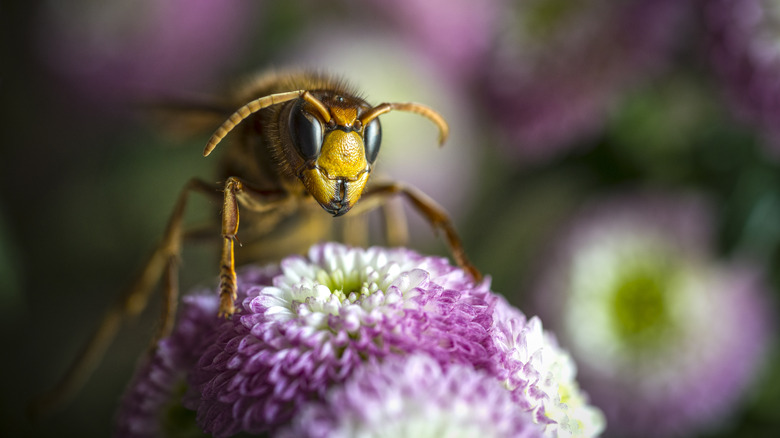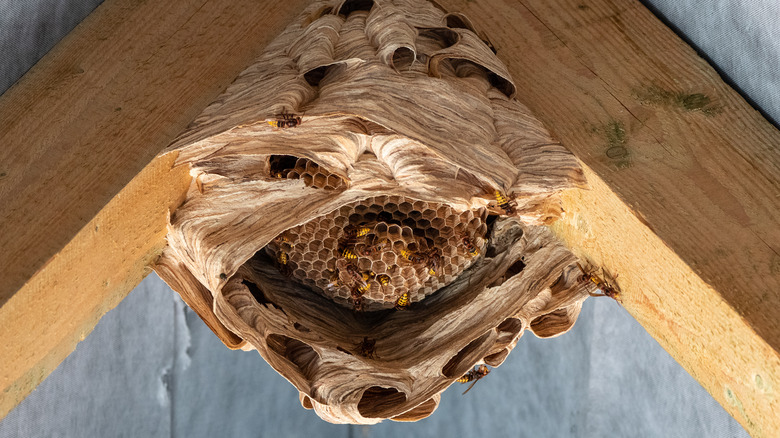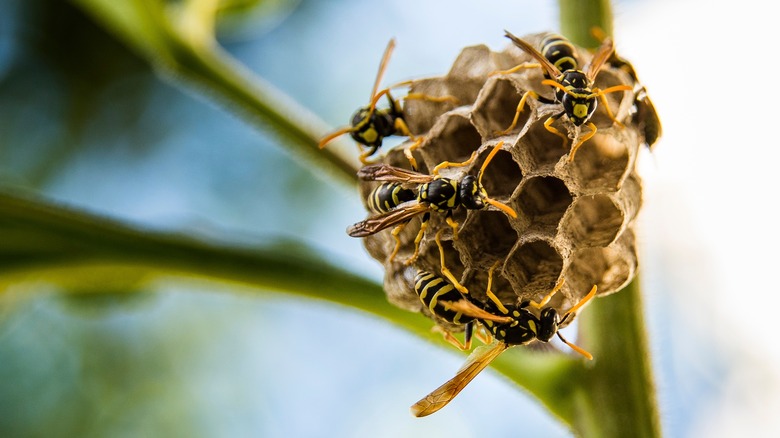Hornet Vs Wasp: How To Determine Which Stinging Pest Is Invading Your Yard
A hornet, in technical terms, is a type of wasp, just like paper wasps and yellow jackets. In fact, these all fall into the category of social wasps. That means they form colonies and prefer teamwork rather than going it alone when it comes to nesting, foraging for sustenance, and keeping their territory safe. There are some nuances that can help you tell a hornet from a wasp, though, including more specific characteristics, behaviors, and what their nests look like.
Why they sting humans and how they do it isn't one of the things that separate them, however. Yes, it might seem like hornets and/or wasps are just lurking around your backyard waiting to sting you, but that's not true. They hunt food with their mouths and employ their stingers and venom when they feel threatened. So, if you've ever gotten stung, it's probably because you unknowingly (hopefully!) got too close to their nest or food source or interrupted them while they were working. Looking at both wasps and hornets in a bit more detail might help you figure out what you're dealing with no matter where they're located on your property.
Characteristics of hornets
Since hornets and wasps have basically the same shape with a small petiole (what you might refer to as a waist) separating their abdomen and chest or thorax, looking at their size is a good indicator. Hornets are decidedly larger than wasps, measuring up to 2 inches in length. They also look fuller and more rounded in comparison to wasps. The European bald-faced hornet, which is the only real hornet making a home in a wide swath of the United States, also has reddish-brown markings on its thorax. The Northern giant hornet (murder hornet), which has an orange and brown striped abdomen that is more elongated, has only been found in the Pacific Northwest at this point.
Hornet nests also look different than wasp nests, at least outwardly. Hornets add an extra layer of protective paper-like material around the outside to conceal the hexagon-shaped cells within so they often look like large balls hanging from rafters or trees. In fact, they can commonly grow as large as a soccer ball and even bigger in some instances. After all, it takes a lot of room to house as many as 700 worker hornets. Hornets tend to be even more aggressive than wasps when protecting their hives, too, so keep that in mind before disturbing a hornet's nest either in the wild or at home.
How to tell if they're wasps
Wasps living in North America exhibit the following colors: yellow, black, white, and orange. Two of the most common are yellow jackets and paper wasps. Just by looking at them on the fly, they're hard to tell apart since the coloring can be similar, but if they measure less than 1 inch in length and have a slim build, you'll know you're dealing with a wasp rather than a hornet. If you're seeing nests made of a paper-like substance filled with hexagon-shaped holes where larvae incubate, that indicates a paper wasp since yellow jackets are a type of wasp that nests underground.
Keep in mind that one type sometimes confused with a large hornet is the eastern cicada-killer wasp since it measures a whopping 1.5 inches long. These wasps have brown on the thorax and distinctive black and light yellow coloring on their large abdomen. The good news is that while they look big and scary, they're not aggressive and don't usually sting humans unless they're severely provoked.
Now that you know how to tell wasps and hornets apart, you can decide the best way to keep them under control in your outdoor spaces. For instance, you might decide to hire a professional to remove a hornet nest, but give making a DIY wasp trap a go on your own.


